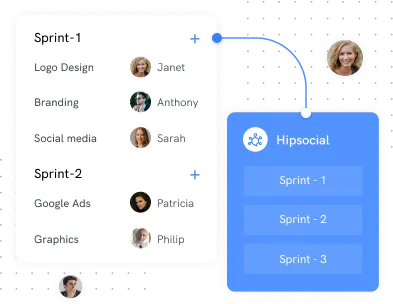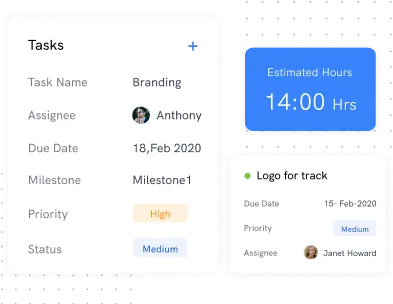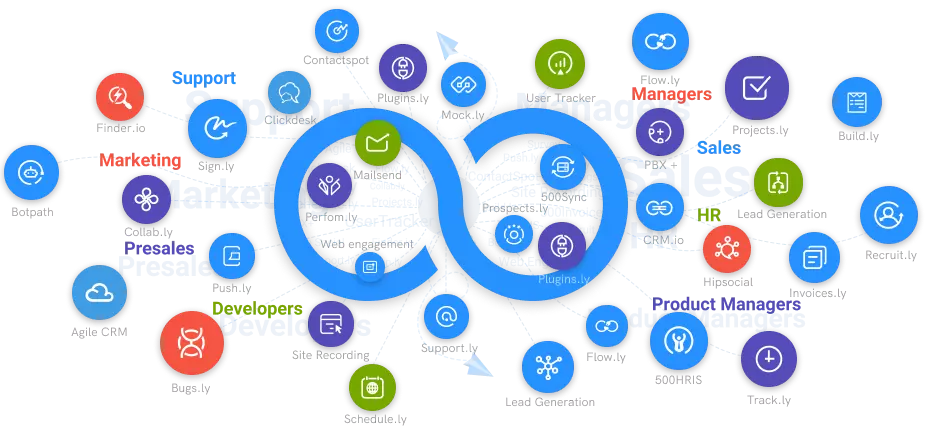What is Agile Project Management?
Let us understand about agile project management and its benefits while using in you projects.
#1
Plan, organize, track all your projects in one place
#2
Get a visibility over individual tasks in the form of kanban boards
#3
Track the project schedule using gantt chart and calendar view
#4
Create advanced workflows with powerful automations
#5
Track employee activities, and working hours using built-in time tracking software, Clockly
#6
Monitor activities using screen recorder on Windows, Mac and Linux devices
#7
Set S.M.A.R.T goals and achieve results
#8
Share files and collaborate with team through discussion boards
#9
Unbelievable pricing - the lowest you will ever find
#10
Everything your business needs - 50 apps, 24/5 support and 99.95% uptime
Agile Project Management is an agile approach to software development projects that ensures that feedback is quickly acted on and that changes are made in a timely manner at each stage of the sprint or product cycle. This enables project teams to use Agile Project Management techniques to work rapidly and collaboratively within the constraints of a project's timeline and budget. An agile project, like agile software development, is done in tiny parts.

An iteration in Agile software development, for example, refers to a single development cycle. The project team, which should include representatives from the project's many stakeholders, reviews and critiques each part or iteration. The insights acquired from each iteration's critique are utilized to define the project's next phase. The major advantage of beginning with Agile Project Management is its capacity to adapt to challenges that occur throughout the project. project management software, making essential changes to a project at the correct moment can assist to save resources and deliver a successful project on time and on budget.
Importance of Agile Project Management
Agile project management encompasses a broad array of agile management techniques, all of which are based on certain common agile concepts and core values. Iterative or agile life cycles are made up of multiple iterations or incremental steps toward project completion. Iterative techniques are commonly used in software development projects to increase velocity and flexibility since iteration allows you to make changes as you go rather than following a linear path. One goal of an agile or iterative strategy is to provide advantages throughout the process rather than just at the conclusion. Agile initiatives should be characterized by key principles and behaviors such as trust, adaptability, empowerment, and cooperation.
Agile project management techniques empower individuals engaged, foster responsibility, promote idea diversity, allow for the early distribution of benefits, and promote continual development. Because changes are progressive and evolutionary rather than revolutionary, Agile management may be effective in promoting cultural change, which is crucial to the success of most transformation initiatives. Agile management may be a 'placebo' in project delivery, functioning because people involved want it to. Agile empowers individuals, fosters a variety of ideas, allows for the early release of benefits, and supports continuous development. It enables decisions to be tested and rejected early on, with feedback loops giving benefits that waterfall can not provide.
Furthermore, it aids in the delivery of change when needs are unknown, aids in the development of client and user involvement by focusing on what is most helpful, and modifications are gradual improvements that can aid in the support of cultural change. Agile decision-making may be aided by feedback loops, which help save money, reinvest, and realize rapid gains. Agile management is a concept that focuses on empowered people and their relationships, as well as early and consistent value delivery into a business. Agile has a long history of appeal and has ""proven"" itself in software development. However, while the reasons are strong, evidence that it is superior to competing techniques is mostly anecdotal.

Agile teams include quick feedback, continuous adaptation, and quality assurance best practices into their iterations. They utilize technology to automate procedures to speed up the delivery and usage of goods, such as continuous deployment and continuous integration. Furthermore, Agile Project Management requires teams to constantly review time and cost as they progress through their job. Instead of using Gantt chart and project milestones to track progress, they use velocity, burndown, and burnup charts to measure their work. Agile Project Management does not necessitate the presence or involvement of a project manager.
Although conventional project delivery techniques, such as the waterfall model, need a project manager to manage the budget, staff, project scope, and other critical components, the project manager's job in APM is divided among team members. The product owner, for example, establishes project goals, while team members divide up scheduling, progress reporting, and quality duties. Certain Agile methods include additional levels of management. The Scrum methodology, for example, requires a Scrum Master to assist in setting priorities and guiding the project through to completion. Project managers, on the other hand, can still be utilized in Agile Project Management. Many businesses continue to utilize them for Agile projects, especially bigger, more complicated ones. Check out our blog on Agile vs Waterfall project management] to know more about the methodologies.
In these companies, project managers often serve as coordinators, with the product owner ultimately responsible for the project's execution. Agile Project Management necessitates that team members understand how to operate within the framework, given the change of work from project managers to Agile teams. They must be able to collaborate with one another as well as with users. They must be able to communicate effectively in order to keep initiatives on schedule. And they should feel at ease taking necessary measures at the proper moments in order to stay up with delivery timetables.
Benefits of Agile Project Management
- Speedy discovery of issues, allowing for faster resolutions
- Increased adaptability and flexibility to changing demands — developers can better adjust to and implement necessary changes
- Increased user collaboration, resulting in products that better suit user demands
- Effective use of resources, allowing for fast deployment
- Greater flexibility – Project Management allows designers to concentrate on models that play to their strengths
- When compared to traditional Project Management approaches such as waterfall, does not necessitate as well-defined goals and processes at the outset of development.
Agile Project Management Principles
There are 12 essential principles of Agile Project Management, according to the Agile Manifesto. They are, in the words of the manifesto, as follows:
- Customer satisfaction is the number one goal, which is achieved via the timely and continual release of important software.
- Accept changing developments, especially if they are late in the development process. Agile procedures use change for the benefit of the customer's competitive advantage.
- Deliver functioning software on a regular basis, from a few weeks to a few months, with a preference for a shorter period.
- Throughout the project, business people and developers must collaborate on a regular basis.
- Build initiatives around motivated people. Give them the atmosphere and support they require and trust them to do the task.
- Face-to-face team conversation is the most efficient and effective way of delivering information to and within a development team.
- The key indicator of progress is functional software.
- Agile procedures encourage long-term growth. Sponsors, developers, and consumers should be able to keep up the pace indefinitely.
- Continuous focus on technical excellence and smart design improve agility.
- Simplicity – the skill of doing as little effort as possible — is vital.
- Self-organizing teams produce the finest architectures, requirements, and designs.
- The team reflects on how to become more effective at regular intervals, then tweaks and modifies its behavior accordingly.
Conclusion
Project management using the Agile approach allows your organization to be more flexible and find a way to address emerging changes. project management software like Projectsly provides the best Agile Project Management features that lets you keep track of all your iterations, sprints, backlogs, and progress for easy Project Management by teams.





